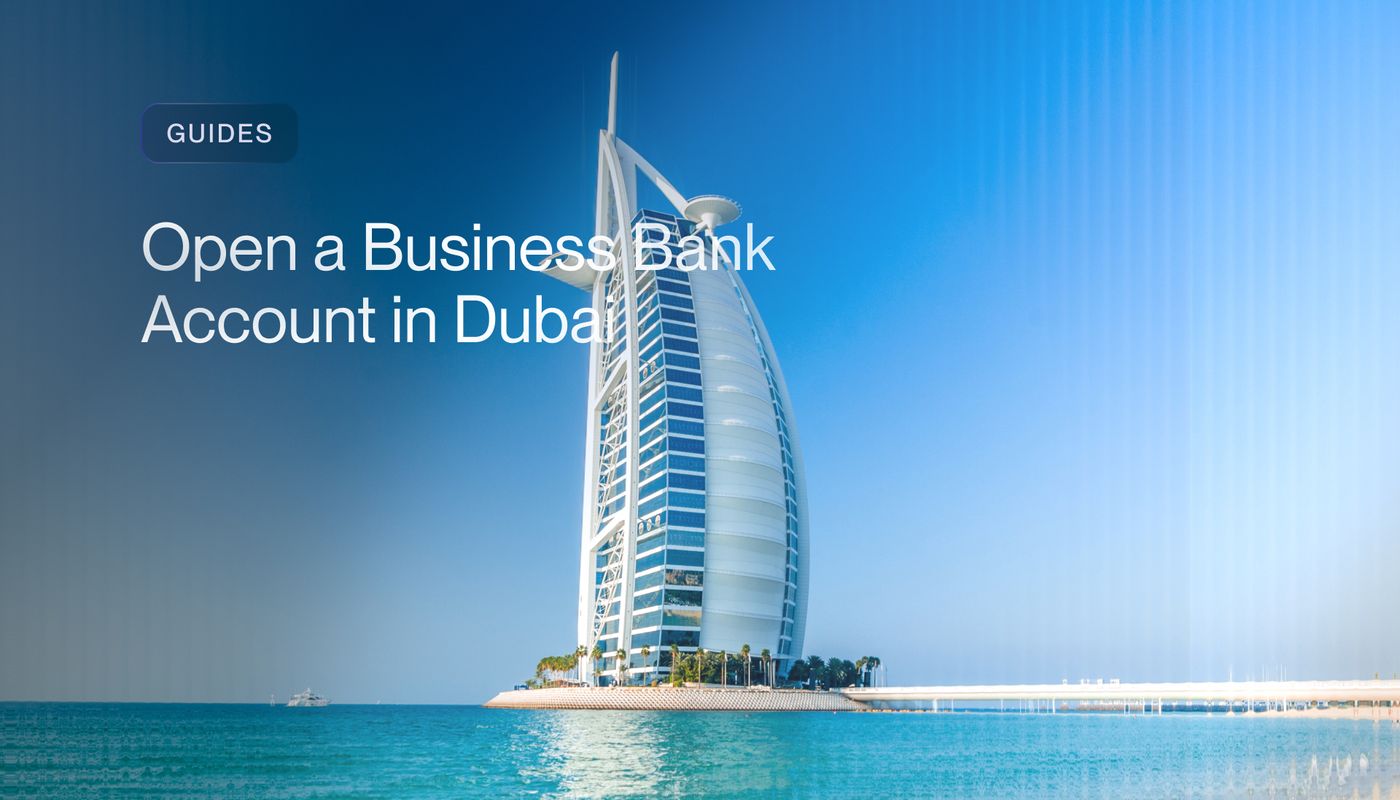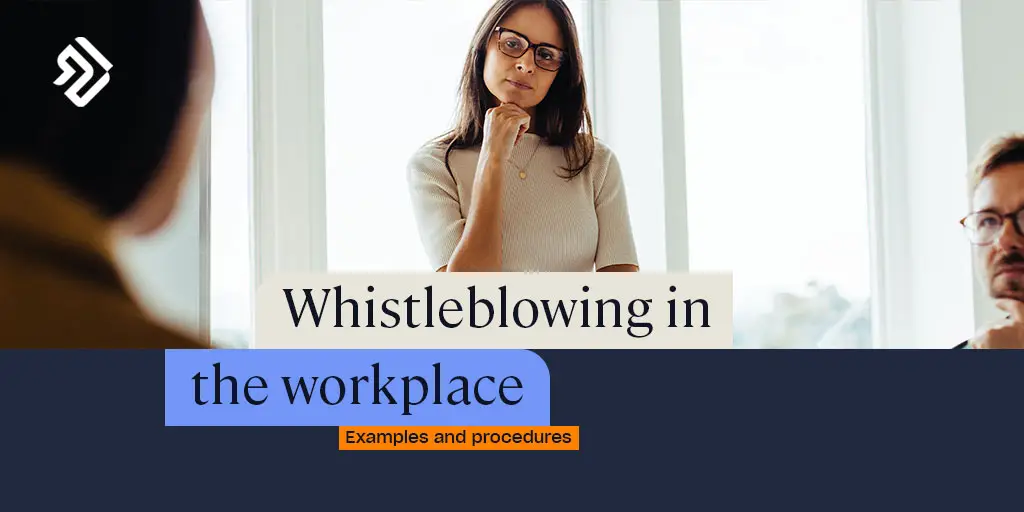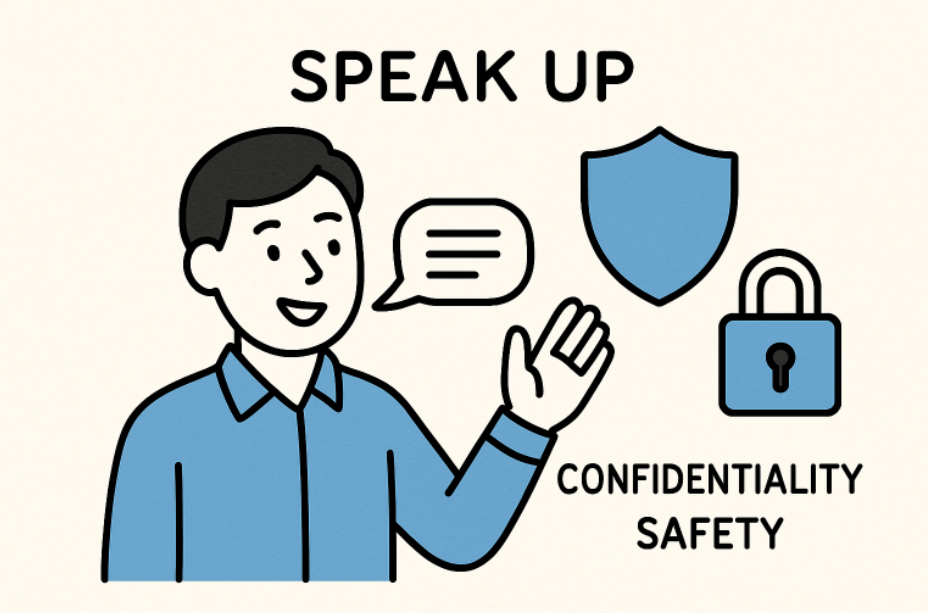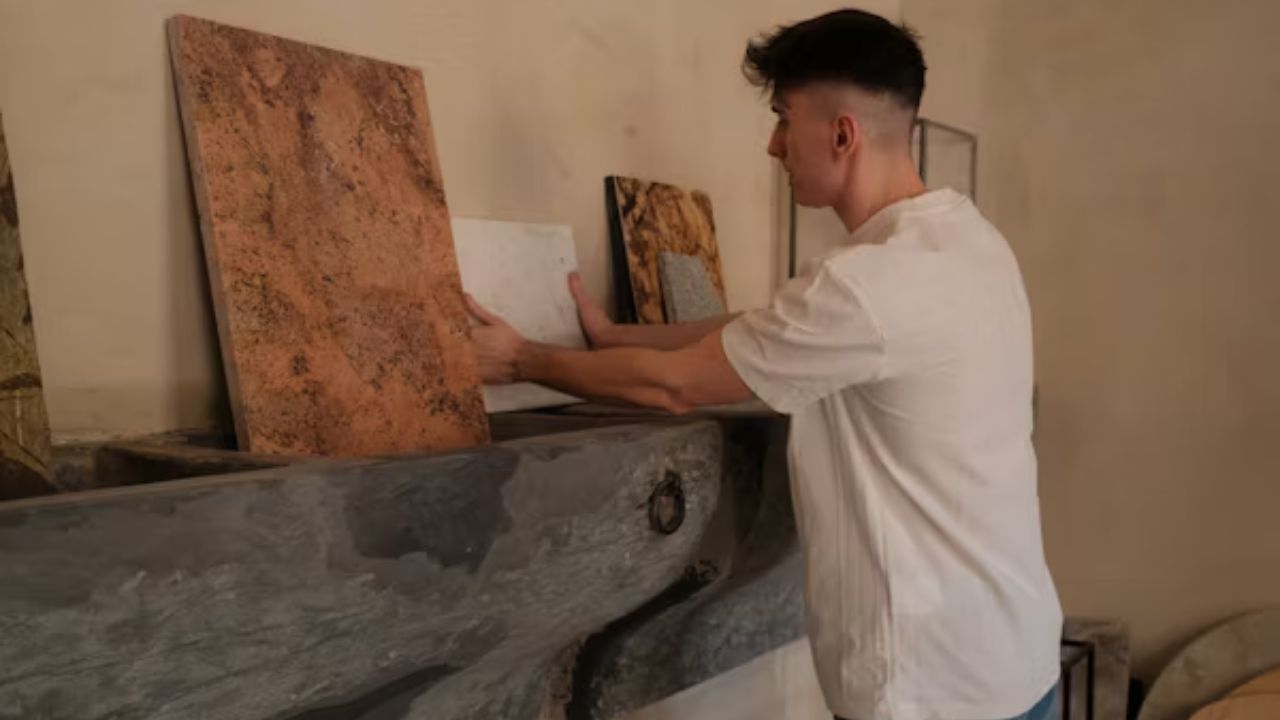TOPIC
How To Open A Business Account In Dubai Without Visiting The UAE – It’s That Easy!

Opening a business account in Dubai without visiting the UAE has become much easier with today’s digital systems. Many entrepreneurs now prefer this option because Dubai is a global business hub and offers strong banking services.
The process of bank account opening can be done remotely if you have the right company setup and documents. This makes it possible to manage your business from anywhere in the world. It’s a smart way to save time, cut travel costs, and still enjoy the benefits of Dubai’s business environment.
Why Open A Business Account In Dubai?
Dubai offers a wealth of benefits to businesses that operate there. It’s a global financial hub, attracting entrepreneurs from all over the world. Some of the key advantages of opening a business account in Dubai include:
- Tax advantages: Dubai offers tax exemptions, including no capital gains tax, making it an attractive option for businesses.
- Global trade opportunities: With its strategic location, Dubai provides easy access to global markets.
- Business-friendly regulations: Dubai is known for its supportive business ecosystem, with ease of doing business for foreign entrepreneurs.
Choosing The Right Business Structure For Your Company – What You Need to Know!
Selecting the right business structure is crucial as it influences your operations and the banking services available to you. Here’s a brief overview of the most common business structures in Dubai:
Mainland LLC:
Allows full access to the UAE market but requires a local sponsor.
- Ideal for: Businesses targeting the UAE market.
- Considerations: Requires a local sponsor.
Free Zone Company:
100% foreign ownership with tax exemptions, ideal for international businesses.
- Ideal for: Remote businesses and quick setups.
- Considerations: Limited to Free Zone operations.
Offshore Company:
Perfect for international trade and asset holding without a physical presence in the UAE.
- Ideal for: Privacy and global reach.
- Considerations: Cannot operate within the UAE.
Branch Office:
Extension of a foreign company in Dubai, 100% owned by the parent company.
- Ideal for: Expanding international businesses.
- Considerations: Limited to parent company activities.
Civil Company:
For professional services like consulting or healthcare, requiring a local service agent.
- Ideal for: Consultants, lawyers, and healthcare providers.
- Considerations: Limited to service-based activities.
What You Need to Know About Dubai’s Business Banks?
Choosing the right bank is crucial. Some banks in Dubai allow you to open a business account remotely, which is a big plus if you can’t visit the country. Here’s a look at the best options:
| Type of Bank | Description | Popular Options |
| Digital Banks | Fully digital services for quick, hassle-free account opening. | Wio Bank, Mashreq NeoBiz, Zand Bank |
| Traditional Banks | Established banks offering online account opening, especially for Free Zone businesses. | Emirates NBD, RAKBANK |
How Can You Open A Business Account In Dubai Without Visiting The UAE? – A Step-By-Step Guide!
Set Up Your Business in Dubai:
To open a business account, first establish your business by selecting a Mainland, Free Zone, or Offshore company, applying for a trade license or incorporation certificate, and choosing your business activity and company name.
Prepare Your Documents:
Prepare these documents for account opening:
- UAE Trade License
- MoA/AoA
- Passport copies of shareholders and signatories
- Proof of UAE address
- Bank reference or overseas bank statements (for non-residents)
- Business plan or financial projections (for new businesses)
Submit Your Application Online:
Most banks now offer online platforms or apps to make your account opening process smoother. Submit all required documents through the bank’s online portal. Some banks may also request a video call to verify your identity.
Complete Compliance and AML Checks:
Banks in Dubai conduct thorough KYC (Know Your Customer) and AML (Anti-Money Laundering) checks. You’ll be required to provide detailed information about your business activities and sources of funds.
Fund Your Account:
Once your application is approved, you’ll be asked to make an initial deposit into your business account. This deposit amount can vary based on the bank and type of account you open.
Access Online Banking:
After funding your account, you’ll gain access to online banking features, allowing you to manage your account from anywhere in the world.
Benefits Of Opening A Business Account Remotely – Why It’s A Smart Choice!
Opening a business account remotely in Dubai offers several advantages that make the process more convenient and efficient for entrepreneurs. Here are some key benefits:
- Convenience: Manage your business finances from anywhere without needing to visit Dubai.
- Time-saving: Skip the travel and lengthy in-person processes.
- Global Access: Access your account from any location, making international operations easier.
- Cost-effective: Save on travel and related expenses.
- Efficient Setup: Quick and streamlined account opening process with digital banks.
What Are The Costs And Timelines For Opening A Business Account In Dubai?
Opening a business account in Dubai can vary in cost depending on the type of bank you choose. Digital banks typically have lower minimum balance requirements, ranging from AED 0 to AED 10,000, while traditional banks may ask for a minimum balance of AED 25,000 to AED 50,000 or more.
Additionally, there might be maintenance fees and costs for document processing. As for the timelines, digital banks are quicker, with approvals often taking just 1 to 5 business days. Traditional banks, however, may take 2 to 4 weeks for approval.
Common Mistakes And Challenges To Avoid When Opening A Business Account Remotely:
While opening a business account remotely is convenient, there are a few common mistakes and challenges to be aware of:
- Incomplete Documentation: Ensure all documents are attested and translated as needed, including foreign-issued documents requiring UAE Ministry of Foreign Affairs attestation.
- Choosing the Wrong Bank: Not all banks offer remote account opening. Select a bank with digital banking capabilities for non-residents.
- Overlooking Minimum Balance Requirements: Each bank has different minimum balance criteria. Failing to meet these requirements could lead to penalties or account restrictions.
- High-Risk Industry Due Diligence: If you’re in a high-risk industry like crypto or forex, be prepared for more stringent checks. This can lead to longer approval times and additional compliance requirements.
- Lack of Understanding Bank Fees: Understand the bank’s fee structure, including maintenance and transaction fees, to avoid unexpected charges.
By being mindful of these common pitfalls, you can ensure a smoother process when opening your business account remotely.
Get Expert Help For Opening A Business Account In Dubai:
Opening a business account in Dubai without visiting the UAE can sometimes feel confusing. That’s why many people choose to get professional help instead of doing everything on their own. With support from trusted experts like HA Group, the whole process becomes quicker, easier, and less stressful.
FAQs:
Are virtual licenses available for remote businesses in Dubai?
Yes, certain Free Zones like SRTIP offer virtual licenses that allow entrepreneurs to operate remotely. These licenses may also offer eligibility for a UAE residence visa.
Do I need a local sponsor for a Free Zone company?
No, Free Zone companies do not require a local sponsor. They allow 100% foreign ownership, making them ideal for international entrepreneurs.
Can I open an offshore company in Dubai remotely?
Yes, you can open an offshore company remotely. However, this structure does not allow you to operate within the UAE market but is ideal for asset holding and international trade.
How can I avoid delays in opening my business account in Dubai?
Ensure all your documents are correctly prepared, translated, and attested. Choose a bank with experience in handling remote applications and check their specific requirements before applying.
Conclusion:
Opening a business account in Dubai remotely is a straightforward process if you follow the right steps and choose the right bank. Ensure all your documents are in order, understand the requirements, and select a bank that suits your business needs.
With the right preparation, you can easily manage your business finances from anywhere in the world.
TOPIC
How Whistleblowers Shape Safer Workplaces

Introduction
Whistleblowers are often the unsung heroes within organizations, stepping forward to expose wrongdoing even at a personal cost. Their actions not only help prevent harm to employees and the public but also hold organizations accountable and encourage higher standards of ethical conduct. In navigating the complexities of modern workplaces, employees who choose to report misconduct increasingly rely on the support and guidance of a whistleblower attorney to protect their rights and navigate the legal landscape. Understanding the role and risk of whistleblowing is critical for promoting environments where transparency and accountability can thrive.
Whistleblowing illuminates practices that might otherwise remain hidden, from financial fraud to safety violations. The process can be daunting, and those who speak up often do so despite the threat of retaliation. Organizations can foster a culture where misconduct is swiftly addressed by building pathways for confidential and effective reporting. Ensuring robust support for whistleblowers also signals a commitment to integrity, making organizations more resilient in the long term.
In recent years, the conversation around ethical reporting has shifted from merely responding to crises toward proactively empowering employees. This change is partly driven by increased public awareness, legal reforms, and technological advancements that make safe reporting more accessible than ever before. However, persistent challenges remain, requiring ongoing commitment from leaders and policymakers.
The Importance of Whistleblowing
Whistleblowers play a central role in preventing harm and ensuring compliance within organizations. When employees report unsafe conditions, fraud, or unethical practices, they act as the first line of defense against risks that could otherwise lead to financial losses, legal penalties, or damage to reputation. According to the Association of Certified Fraud Examiners, over 40% of detected fraud cases rely on employee tips, making internal reporting mechanisms vital for effective risk management.
Beyond fraud prevention, whistleblowing can also enhance workplace safety. Uncovering safety violations early helps organizations address hazards before they escalate, protecting both workers and the public. The impact of whistleblowers extends well beyond the walls of an organization, setting ethical expectations and improving industry standards across sectors.
 Challenges Faced by Whistleblowers
Challenges Faced by Whistleblowers
Despite their valuable contributions, whistleblowers often face severe challenges. Fear of retaliation, such as demotion, dismissal, harassment, or professional ostracization, can dissuade employees from coming forward. Research from the Ethics & Compliance Initiative found that nearly half of U.S. employees who observed misconduct opted not to report it due to concerns about indifference from management or direct retaliation.
Social pressures within the workplace can further compound the difficulty of speaking up. Many employees worry about being excluded by peers or labeled as disloyal, creating a culture of silence that allows unethical practices to continue unchallenged. These challenges highlight the need for support systems and legal safeguards to protect those who voice concerns.
Legal Protections for Whistleblowers
Legal protections are designed to shield whistleblowers from employer retaliation and to foster honest reporting. In the United States, laws such as the Occupational Safety and Health Act, the Dodd-Frank Wall Street Reform and Consumer Protection Act, and the Sarbanes-Oxley Act provide significant protections for those who disclose wrongdoing. The Occupational Safety and Health Administration (OSHA) oversees over twenty whistleblower statutes, providing robust legal frameworks to safeguard whistleblowers.
OSHA’s close cooperation with the National Labor Relations Board has expanded these protections, ensuring that whistleblowers are aware of their rights and the procedures available for seeking remedies. Internationally, other jurisdictions like the European Union have enhanced whistleblower protections through directives and legislative reforms.
Technological Support for Whistleblowing
Technology has transformed the landscape of whistleblowing, offering new tools to enhance anonymity and security. Digital platforms—such as secure online deposit boxes and encrypted communication channels—empower employees to report concerns without fear of exposure. These solutions are especially valuable in environments where speaking up openly would put individuals at risk.
Some platforms connect people with shared concerns, facilitating collective action in response to systemic issues. By making anonymous reporting accessible on a broad scale, technological advancements help organizations detect and address problems early, while also sending a clear signal that reports will be taken seriously.
Building a Culture of Transparency
While legal and technological measures are essential, cultivating a culture of transparency remains the cornerstone for safe and ethical workplaces. Effective whistleblower programs begin with top-level leadership commitment. Organizations should establish clear, well-communicated policies that encourage ethical reporting and provide assurance of protection for those who speak up.
Regular training ensures that employees are aware of both their rights and responsibilities. Leaders play a critical role by modeling integrity and responding to reports consistently and respectfully. By providing meaningful feedback and making visible improvements based on tips received, organizations reinforce trust and inspire broader participation in compliance efforts.
Conclusion
Whistleblowers play a vital role in protecting workplaces from misconduct and promoting cultures rooted in honesty, accountability, and integrity. Their courage to speak out helps uncover unethical practices, prevent harm, and uphold public trust. However, to maximize the impact of ethical reporting, organizations must go beyond compliance by reinforcing legal protections, investing in secure reporting technologies, and building supportive environments where transparency is valued. Encouraging employees to raise concerns without fear of retaliation strengthens morale and governance. When employers champion whistleblower protection, they safeguard their workforce and enhance organizational resilience, credibility, and long-term success in an increasingly ethics-driven business landscape.
TOPIC
Juvgwg: Historical Context and Future Prospects

Imagine a world where ancient traditions meet modern innovation, creating a unique tapestry of culture and practice. Enter Juvgwg, an intriguing phenomenon that has captivated the hearts and minds of many. This fascinating exploration delves into what Juvgwg truly is—a rich blend of history, meaning, and potential for the future. Whether you’re familiar with it or just beginning to discover its depths, Juvgwg beckons you to explore its significance in today’s society while considering how it can evolve moving forward. Let’s embark on this journey together!
What is Juvgwg?
Juvgwg is a fascinating concept that intertwines tradition with modern-day practices. At its core, it embodies an ethos of community and connection.
This practice emphasizes the importance of shared experiences and understanding among individuals. It often involves rituals or activities that foster bonding.
Participants engage in various forms, from artistic expression to collective decision-making. The essence lies in collaboration and mutual respect.
What sets juvgwg apart is its adaptability across cultures. Each interpretation adds a unique flavor while preserving fundamental principles.
Juvgwg represents more than just an activity; it’s a lifestyle choice focused on unity and meaningful interactions.
History and Cultural Significance of Juvgwg
Juvgwg has roots that stretch deep into the fabric of various cultures throughout history. Its origins are often tied to rituals and community bonding experiences, reflecting a shared human experience.
Historically, Juvgwg served as a medium for storytelling. Generations passed down traditions through its practice, embedding it within cultural identities. Each region adapted it in unique ways, creating vibrant local variations.
The significance of Juvgwg is not just historical; it’s symbolic. It represents resilience and adaptability amidst changing social landscapes. Communities have used it to navigate challenges and celebrate milestones.
Artistic expressions related to Juvgwg can be found in music, dance, and visual arts. This multifaceted nature allows it to resonate across age groups while maintaining relevance today.
As society evolves, so does the interpretation of Juvgwg, ensuring its place in modern narratives while honoring its rich heritage.
Current State of Juvgwg in Modern Society
Today, juvgwg finds itself at a fascinating crossroads. More people are discovering its unique values and practices, driven by a growing interest in cultural heritage.
Social media has played a significant role in this resurgence. Platforms like Instagram and TikTok showcase juvgwg to broader audiences, sparking curiosity among younger generations. They engage with it through challenges that emphasize creativity and community.
However, there’s tension too. As juvgwg gains popularity, some traditionalists worry about its commercialization. Preserving authenticity becomes crucial amid mass appeal.
Community events have sprung up globally, allowing enthusiasts to connect face-to-face. Workshops offer hands-on experiences while fostering an appreciation for history.
In academic circles, the study of juvgwg is expanding rapidly. Researchers explore its roots and relevance today, ensuring it remains relevant for future discussions on culture and identity.
The Benefits and Drawbacks of Practicing Juvgwg
Practicing juvgwg offers several benefits that can enhance both personal growth and community engagement. For many, it serves as a means of self-expression. It encourages creativity and mindfulness, allowing individuals to explore their thoughts deeply.
On the flip side, there are drawbacks to consider. Some find that diving into juvgwg can be overwhelming or even alienating when faced with its complexities. The learning curve might deter potential newcomers who feel intimidated by the depth of knowledge required.
Moreover, practitioners may struggle to maintain a balance between tradition and modern adaptation. This tension could lead to conflicts within communities about how best to preserve juvgwg’s integrity while making it accessible for future generations.
Understanding these pros and cons is crucial for anyone looking to engage meaningfully with this rich practice.
Future Possibilities for the Evolution of Juvgwg
The future of juvgwg holds exciting potential. As society evolves, this practice may adapt to fit contemporary contexts. Technology plays a pivotal role in shaping new trends.
Virtual communities are emerging. People can connect globally, sharing experiences and insights about juvgwg without geographical barriers. This digital interaction could lead to innovative interpretations and expressions of the tradition.
Education is another key area for growth. Institutions might increasingly incorporate juvgwg into curricula, fostering understanding among younger generations. Workshops and seminars could enhance appreciation while preserving its core values.
Moreover, collaborations across cultural boundaries can enrich narrative. Artists and practitioners from diverse backgrounds might influence its evolution through fusion with other art forms or practices.
As interest grows, sustainable practices will likely emerge within the community too. Embracing eco-friendly approaches ensures that juvgwg remains relevant in our ever-changing world while honoring its roots.
How to Get Involved with Juvgwg
Getting involved with juvgwg can be a rewarding experience. Start by researching local groups or online communities focused on this fascinating practice. Social media platforms often host discussions where enthusiasts share insights and resources.
Consider attending workshops or events dedicated to juvgwg. These gatherings offer hands-on opportunities to learn from experienced practitioners, ask questions, and connect with like-minded individuals.
Volunteering for organizations that promote jvugwg initiatives is another great option. This not only enhances your understanding but also contributes positively to the community.
You might also explore creating content around —blogs, videos, or podcasts are excellent ways to express your passion while educating others about its significance.
Don’t hesitate to reach out directly to experts in the field. Engaging in conversations can deepen your knowledge and encourage collaborative projects that benefit everyone interested in juvgwg.
The Enduring Legacy of Juvgwg
The enduring legacy of juvgwg is woven into the fabric of cultural identity. Over generations, it has shaped traditions and influenced art forms, reflecting the values and beliefs of communities.
Practitioners carry forward the essence of through rituals and gatherings. Each event becomes a living testament to its history. Stories passed down create a rich tapestry that connects past with present.
In contemporary settings, continues to inspire innovation while maintaining its core principles. Artists draw from its deep roots, blending ancient practices with modern techniques.
This adaptability ensures that remains relevant today. Its teachings resonate across diverse cultures, promoting unity and understanding among different groups.
As new generations discover juvgwg, they contribute their perspectives. This infusion of fresh ideas guarantees its evolution while honoring foundational elements that have stood the test of time.
Conclusion
Juvgwg represents a fascinating blend of history, culture, and modern trends. Its roots run deep, providing insights into the values and beliefs of societies that once thrived around it. As we look at its current state, it’s clear that while challenges exist, there is also a resurgence of interest in practices.
The benefits are compelling. Engaging with can foster community connections and personal growth. Yet drawbacks like misinformation or cultural appropriation must be navigated carefully to preserve authenticity.
Looking ahead, the future of seems promising as more people recognize its significance. Innovations may emerge that respect traditional practices while adapting to contemporary life.
For those interested in exploring this rich tradition further, numerous avenues invite participation and learning. Workshops, local gatherings, or even online forums provide spaces for connection and understanding.
As the legacy of juvgwg continues to evolve through generations, it remains a testament to human creativity and resilience—encouraging us all to appreciate our shared histories while envisioning new possibilities together.
TOPIC
Unveiling the Art of Acamento

In a world that constantly seeks beauty, craftsmanship, and meaning, certain terms capture the essence of refined skill and artistry. One such word is Acamento—a term rooted in tradition, yet resonating strongly in contemporary creative industries. Whether you’ve come across it in design, architecture, or cultural contexts, Acamento represents more than just a technique—it’s an art form in itself.
This article explores the origins, techniques, applications, and modern relevance of Acamento, revealing why it continues to inspire artists, designers, and makers across the globe.
What Is Acamento?
At its core, Acamento refers to a finishing or refinement process applied to an object, surface, or material. The word is derived from Romance languages (notably Portuguese and Italian variants), where it directly translates to “finish,” “completion,” or “polishing.” In artistic and industrial contexts, it represents the final stage of creation—where raw craftsmanship transforms into a perfected masterpiece.
In short, Acamento is where function meets beauty. It’s the point in the creative journey where small details, texture, and surface quality elevate an object from ordinary to extraordinary.
Historical Origins
The concept of Acamento dates back centuries. In medieval Europe, artisans used specialized tools and methods to refine woodwork, metalwork, and ceramics. In Renaissance Italy, finishing was regarded as a sign of mastery—painters, sculptors, and architects considered Acamento the ultimate proof of their skill.
Influence of Traditional Craft
-
Woodworking – Hand-sanding and oil finishing to achieve a smooth, tactile feel.
-
Metal forging – Polishing and engraving to bring luster and decorative detail.
-
Textiles – Washing, pressing, or dyeing to enhance fabric texture and color.
-
Stone carving – Using abrasives to reveal intricate designs and polished surfaces.
These early methods set the foundation for the modern techniques we see today.
Acamento Across Industries
One of Acamento’s most fascinating aspects is its versatility. While its origins lie in manual craftsmanship, it now spans a wide range of fields.
1. Interior Design & Architecture
In design, Acamento often refers to the final surface treatment of walls, floors, or furniture. Examples include:
-
Decorative plaster textures.
-
High-gloss paint finishes.
-
Matte, satin, or metallic coatings for unique visual effects.
2. Fashion & Textiles
In the fashion industry, Acamento can mean:
-
Fabric treatments for softness or sheen.
-
Special coatings for waterproofing or durability.
-
Embellishments like embroidery, beading, or sequins.
3. Automotive & Industrial Design
From luxury cars to consumer electronics, finishing processes define brand identity:
-
Automotive paintwork with deep gloss or matte finishes.
-
Precision polishing of metal and plastic components.
-
Laser engraving for logos or decorative accents.
4. Fine Arts
In painting and sculpture, Acamento involves:
-
Final varnishing to protect and enhance color.
-
Patination for bronze sculptures.
-
Subtle textural adjustments to ensure harmony in the piece.
Techniques and Methods
The art of Acamento can be manual, mechanical, or digital, depending on the medium.
Manual Methods
-
Sanding – Layered grain reduction for a smooth surface.
-
Polishing – Using cloth, abrasives, or polishing compounds.
-
Burnishing – Applying friction for natural gloss.
-
Hand-paint detailing – Adding fine, intricate touches.
Mechanical Methods
-
Machine polishing for uniform finishes.
-
Spray coating for consistent texture and color.
-
Industrial buffing and grinding for large-scale production.
Digital Finishing
With 3D printing and digital design, Acamento has entered virtual and automated spaces:
-
Surface texturing through CAD software.
-
Automated UV coating.
-
Laser etching with precision accuracy.
Cultural Significance of Acamento
Beyond technical skill, Acamento carries symbolic meaning in many cultures. It’s often seen as:
-
A sign of respect – Completing work to perfection honors both creator and recipient.
-
An expression of identity – Regional finishing styles distinguish cultural craftsmanship.
-
A bridge between tradition and modernity – Combining old techniques with new tools keeps traditions alive while embracing innovation.
For example, in Japan’s Kintsugi pottery repair, the final lacquer finish is part of the philosophical message: beauty in imperfection. Similarly, in Portuguese ceramics, vibrant glaze finishing reflects national heritage.
Modern Trends in Acamento
As consumer tastes evolve, finishing trends follow suit. The 21st century has brought new directions in Acamento:
1. Sustainable Finishes
Eco-friendly coatings, water-based paints, and natural oils are replacing solvent-heavy materials.
2. Minimalist Aesthetics
Soft-touch matte finishes and subtle textures cater to minimalist design lovers.
3. Digital Customization
Clients can now preview finishes in 3D renderings before production, blending artistry with technology.
4. Experiential Surfaces
Interactive finishes—such as colour-changing paints or tactile textures—add sensory engagement to objects.
The Skill Behind the Finish
While technology has advanced, the human touch remains central to exceptional Acamento. Master finishers possess:
-
Patience for repetitive, detail-oriented work.
-
Knowledge of materials and how they respond to treatment.
-
Artistic intuition to balance aesthetics and durability.
A rushed or careless finish can undermine even the most skilfully made piece, making the final stage as important as the first.
Why Acamento Matters Today
In a fast-paced world of mass production, attention to finishing reflects quality, care, and authenticity. It tells the consumer:
-
This product is worth your investment.
-
The creator values craftsmanship.
-
Durability and beauty are equally important.
From luxury watches to handcrafted furniture, it’s often the finish that convinces someone to choose one product over another.
Learning and Mastering Acamento
For aspiring designers, artisans, or hobbyists, mastering Acamento requires:
-
Understanding Materials – Wood, metal, fabric, and ceramics each require different approaches.
-
Experimentation – Testing finishes on sample pieces before applying to final work.
-
Continuous Learning – Staying updated on new tools, eco-friendly products, and style trends.
-
Mentorship – Learning from experienced finishers to refine techniques.
Workshops, design schools, and online tutorials now offer specialized training in various finishing disciplines.
The Future of Acamento
Looking ahead, Acamento will continue evolving through:
-
AI-assisted design – Predicting optimal finishes for functionality and beauty.
-
Sustainable innovation – Development of biodegradable coatings and finishes.
-
Global fusion styles – Cross-cultural influences creating hybrid finishing trends.
Despite these changes, the core principle remains: Acamento is about elevating the ordinary into the exceptional.
Final Thoughts
The art of Acamento may begin with materials and tools, but it ends with a vision—one that values precision, patience, and perfection. Whether in a handcrafted ceramic vase, a luxury automobile, or a digital 3D model, the finishing process is the final signature of quality.
-

 TOPIC2 months ago
TOPIC2 months agov4holt: Revolutionizing Digital Accessibility
-

 TOPIC2 months ago
TOPIC2 months agoMolex 39850-0500: An In-Depth Overview of a Key Connector Component
-

 TOPIC2 months ago
TOPIC2 months agoMamuka Chinnavadu: An Exploration of Its Significance and Cultural Impact
-

 TOPIC4 weeks ago
TOPIC4 weeks agoGessolini: Minimalist Aesthetic Rooted in Texture
-

 TOPIC2 months ago
TOPIC2 months agoDorothy Miles: Deaf Poet Who Shaped Sign Language
-

 TOPIC2 months ago
TOPIC2 months agoArnav Deepaware: A Rising Computer Scientist and Innovator
-

 TOPIC2 months ago
TOPIC2 months agoManguonmienphi: Understanding the Concept and Its Impact
-

 TOPIC2 months ago
TOPIC2 months agoNomurano: Lifestyle Aesthetic Shaping Sustainable Simplicity
